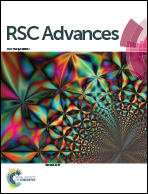Investigation into THF hydrate slurry flow behaviour and inhibition by an anti-agglomerant
Abstract
Hydrate plugs are one of the highest risks for gas and oil transportation in pipelines, especially in deep sea environments. In a newly built-up loop, pilot-scale experiments were carried out to study typical hydrate plug phenomena and to explore the specific reasons behind these. A tetrahydrofuran (THF) hydrate slurry was formed and investigated in this loop fluid at two liquid loadings (50 vol% and 100 vol%) with/without a typical anti-agglomerant, KL-1. Morphology and temperature variations revealed that THF hydrate slurry evolution had four stages: (a) flowable fluid; (b) particle formation; (c) agglomeration; and (d) plug. The effect of liquid loading (LL) and an anti-agglomerant (AA) on morphology and temperature in three cases were studied. The morphologies in each stage were compared for the three cases. Hydrate conversion was calculated according to the liquid and solid volume proportion in these morphologies. From these morphologies, heterogeneous hydrate deposition was found to be more likely to happen in 50 vol% than in the 100 vol% LL system. The hydrate plug was also found to be induced by hydrate deposition rather than the bed at the bottom of the pipeline. By dispersing hydrate particle agglomeration, AA compressed hydrate deposition and the plug.



 Please wait while we load your content...
Please wait while we load your content...